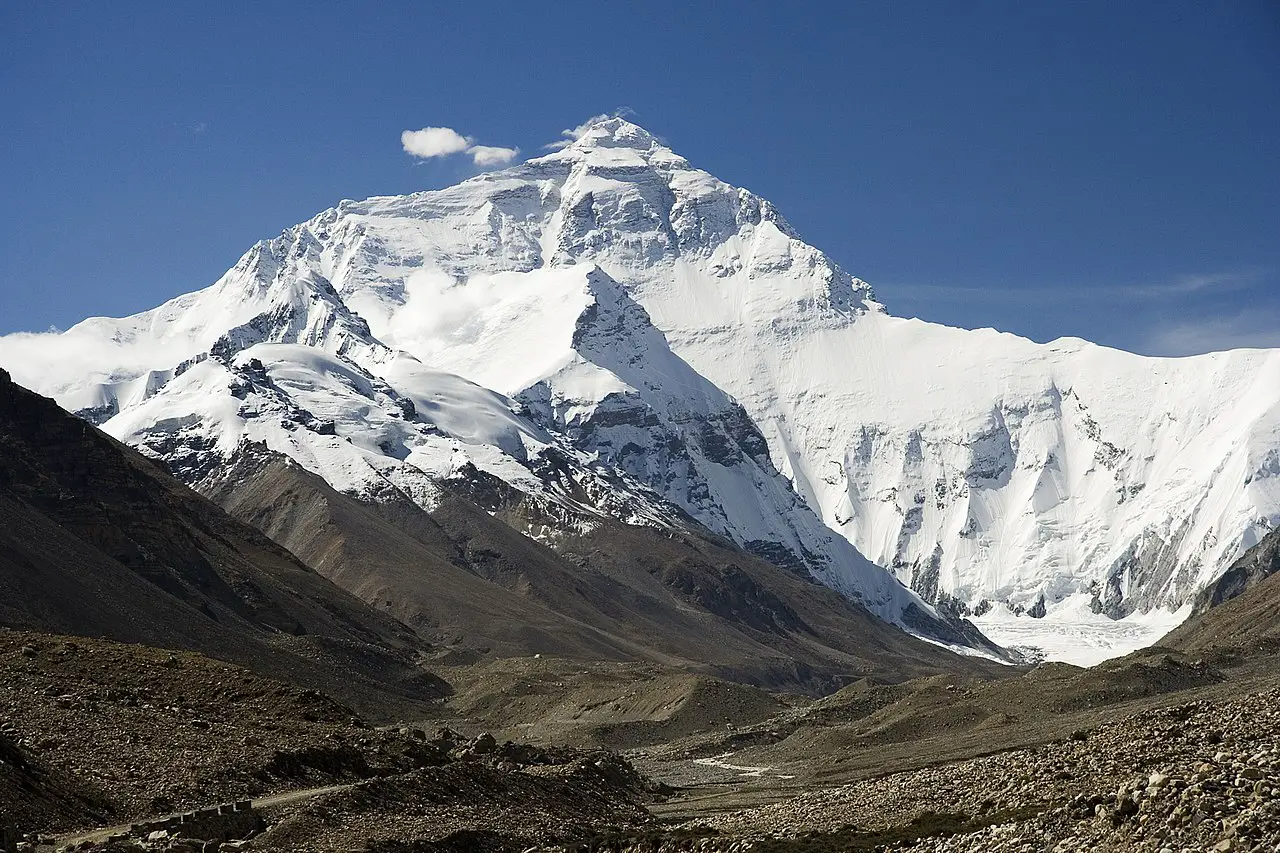Last week we started to get more detailed information about the events that took place on the South Side of Everest this spring, when an avalanche claimed the lives of 16 Sherpas, and resulted in the cancellation of the entire season. Russell Brice, the owner and operator of Himalayan Experience, has been writing a series of blog posts in which he shares exactly what happened on the mountain.
Over the weekend he posted the fourth of five such reports, with more insights into what led to the cancellation. If you haven’t read the first three notes that he shared, I suggest you do so first. Links to my previous coverage can be found here and here.
The fourth update can be read in its entirety here. This time out, Brice discusses what happened after the avalanche, and the efforts to rescue the surveyors, as well as retrieve the bodies of he fallen. Immediately after the tragedy, most of the Sherpas left Base Camp to spend some time with their families, and mourn the loss of their friends.
During that period, Russell and Phil Crampton, the head of IMG, flew to Kathmandu to meet with the Ministry of Tourism to discuss what to do next. The two expedition leaders urged the Ministry to send representatives to Base Camp to meet with the Sherpas, who were already enraged by the events that had taken place on the mountain. By this time, the Ministry had already agreed to most of the demands of the Sherpas, but with the season hanging in the balance, they agreed to go to BC.
Russell says that upon his return to Base Camp, he was told that the Sherpas there were angry that he had left the mountain and flown to Kathmandu to talk directly with the Ministry. They felt he was trying to undermine their demands, although Brice explains that he also had to keep the best interest of his clients in mind as well.
With tensions running high, he elected to stay away from the meeting with the Sherpas and the Ministry representatives, but he was told that it was indeed an angry gathering. Someone attempted to turn off the oxygen that the Minister of Tourism was using to breathe easier in BC, and rocks were reportedly thrown at their helicopters when they attempted to land. Needless to say, it was a difficult meeting between the two sides.
While Brice gives the Nepali government credit for meeting the Sherpa demands quickly, he also acknowledges that the Sherpa didn’t hold up to their end of the bargain, specifically saying that it was okay for teams to decide on their own if they wanted to climb the mountain.
The pressure that was placed on everyone to cancel their expeditions was great, and so in the end they all pulled the plug and went home for the year. This was despite the fact that many Sherpas wanted to stay, and figure out a way to keep the Everest open. Russell says that he lost a great deal of respect for the leaders of the Sherpa contingent that pushed for the closure.
In this post, he also talks about the logistics of using helicopters to gather gear and supplies that were in Camps 1 and 2 following the closure of the mountain. Brice says that it went very well, and that it was a good way to get the gear down without putting people in further danger by crossing the Khumbu Icefall.
The operation was supposedly condoned by the Nepali government, but they have since said that the teams did not have permission to use the helicopters. There could be some potential fallout as a result.
There is one more blog post to come from the Himex boss, and it will deal with what happened in Kathmandu once all of the teams left the mountain. I have a feeling there will be quite a few interesting stories to come out of that article as well, and from the sounds of things, the situation there is still in flux.
Repercussions from this season are likely to be felt for a long time to come, but it is good to hear directly from someone who isn’t afraid to share the story of what exactly happened on the mountain.
The crazy Everest season is over, but we certainly have not heard the last of it.
- Gear Review: The Xero Scrambler Mid is an Ultralight Hiking Shoe for Spring - March 1, 2023
- Gear Review: Yeti Roadie 48 Wheeled Cooler - August 18, 2022
- Kristin Harila Continues Pursuit of 8000-Meter Speed Record - August 16, 2022
